History of birth, development and death Flight Simulator
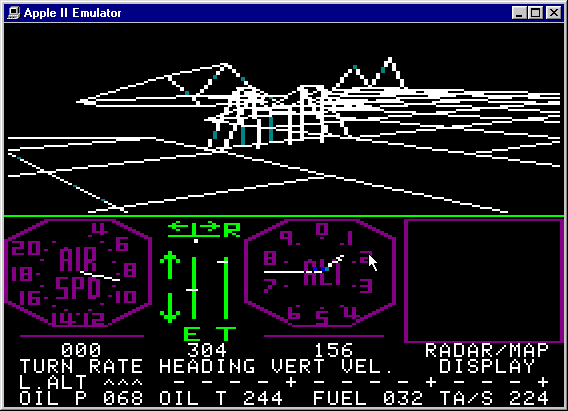
Flight Simulator is the longest and most successful series of simulators ever created. In the history of its development, it is interesting how the code and principles laid down in the late 70s remained unchanged for decades.
In 1975, Bruce Artvik received a bachelor of science degree as an electrical engineer at the University of Illinois. One should not think, however, that cybernetics was far away for him: initially, in 1973, he chose computer design as his specialty, and only later changed his course of study to electrical engineering, because he believed that in these early years of computer engineering, such a scientist would understand power. In 1975-1976 in parallel with the work of the group developing graphic terminals for Digital Computer Lab, where Bruce could communicate with Ken Thompson, the creator of the original UNIX, and work with one of the first UNIX machines PDP-11, Artvik found time for flight lessons for thesis writing, the theme of which was multi-layer dynamic computer graphics of flight. Artvik considered the model of the flight of the aircraft, shown on the computer screen, which actually meant the birth of the entire series.
')
 After receiving a Master of Science degree in 1976, Bruce began working at Hughes Aircraft in Culver City (Los Angeles area). Experience with the PDP-11 allowed Artvik to prove that the Motorola 6800 processor (the first available microcomputer) will be able to do arithmetic calculations and display flight simulation graphics. Bruce Artvik wrote a program and several articles for magazines about his idea. When the editor of one of them called Artvik and said that some readers want to buy the program, Bruce decided to found the company subLOGIC. Her name was a reference to the logic circuits for the PDP-11, which Artvik worked during his years at the Digital Computer Lab.
After receiving a Master of Science degree in 1976, Bruce began working at Hughes Aircraft in Culver City (Los Angeles area). Experience with the PDP-11 allowed Artvik to prove that the Motorola 6800 processor (the first available microcomputer) will be able to do arithmetic calculations and display flight simulation graphics. Bruce Artvik wrote a program and several articles for magazines about his idea. When the editor of one of them called Artvik and said that some readers want to buy the program, Bruce decided to found the company subLOGIC. Her name was a reference to the logic circuits for the PDP-11, which Artvik worked during his years at the Digital Computer Lab.subLOGIC Flight Simulator 1 (1979)
Created in tandem with Stuart Moment in 1978, the company began developing software for the Motorola 6800, MOS Technology 6502 and Intel 8080 processors. In 1979, Artvik released Flight Simulator for the Apple II based on the 6502 processor and then for the Radio Shack TRS microcomputer -80. Her graphics looked like this:

The first simulator had black-and-white graphics of the earth's surface (maximum - 36 squares, 6 × 6), only one aircraft and limited simulation of flight processes. Despite all the shortcomings, the simulator was a huge success, and in 1981 it was named the best-selling entertainment program for the Apple II. As now, the majority of simulator users were not professional pilots. To fit the graphics into the weak capabilities of the TRS-80, we had to remove the dashboard and lower the resolution. Thus, the version of Flight Simulator for TRS-80 has the simplest graphics among all flight simulators. SubLOGIC later released a software update for both platforms. The update included an improved terrestrial surface, a help menu and the ability to view from a bomb-sight.
Microsoft Flight Simulator 1.0 (1982)
Artvik's work did not go unnoticed: another nerd from Redmond founded his own company and showed interest in the simulator. IBM also entered the fight for a Flight Simulator license, but Microsoft got a joint license for porting to the IBM PC architecture - Artvika liked the atmosphere of a small company.
In November 1982, Microsoft Flight Simulator 1.0 was released for the PC platform, soon followed by a second version. In the new simulator, the updated FS world coordinate system appeared, developed by Artvik and used until the fifth version, weather effects, a battle mode with Sopwith Camel, time of day and improved graphics. System requirements have also increased: users had to update their cars largely due to Flight Simulator. MS FS was even used as a benchmark: a machine capable of running MSFS 1.0 and Lotus 1-2-3 was considered fully IBM PC-compatible.

subLOGIC Flight Simulator 2 (1983-1984)
The superiority of the ported program improvements for the IBM PC was obvious, and customers were asked to enter them for the original platform. subLOGIC has developed and released Flight Simulator 2 version 1 for non-IBM platforms. This version had solid colors on the type of program from Microsoft, several locations in the US, and was intended for platforms Apple II (1983), Commodore 64 and Atari 800 (1984). The functionality of add-ons appeared for the first time, although not in the form in which it reached us today. Programs vary by target device due to their limitations. Versions for the Amiga, Atari ST and Macintosh, released in 1986, are sometimes allocated to the third generation, since they have been slightly improved.
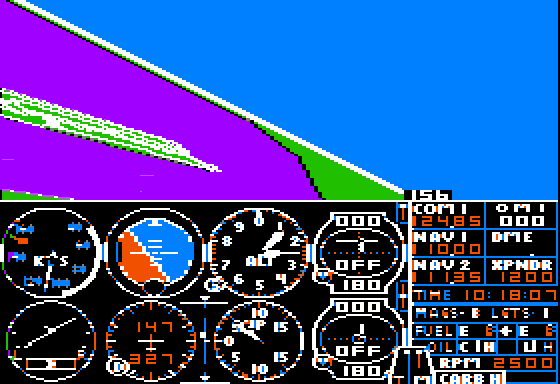
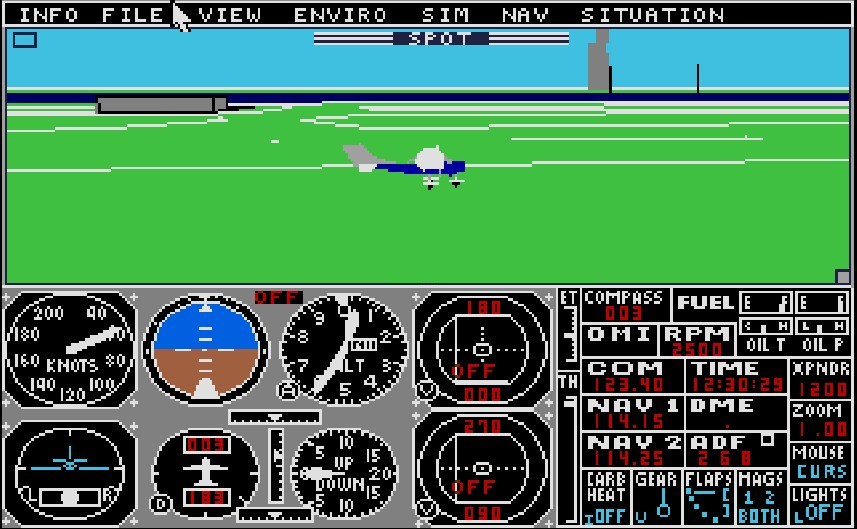
Microsoft Flight Simulator 2.0 (1984)
In 1984, Microsoft released a new version of its product, and it was not too different from the first. The new simulator contained landscapes of all the United States, although the airports from the first version were not added. There was compatibility with Scenery Disks add-ons from subLOGIC, which soon covered the entire USA, Hawaii, Japan, and parts of Europe with patches.

Microsoft Flight Simulator 3.0 (1988)
In 1988 Artvik left the subLOGIC and founded the new company BAO Ltd. (Bruce Artwick Organization), which was engaged in the development and marketing of products for flight simulators. This was mainly Microsoft Flight Simulator, as well as programs for the US Federal Aviation Administration, such as control tower simulators, air traffic controllers, etc. The BAO staff was 35 people, and the company continued to work in tandem with Microsoft on new versions of simulators until 1995, when Artvik sold the assets of Microsoft, and the employees moved to an office in Seattle.
Later in the 88th year, the third version of the Redmond simulator was released, it appeared separate customizable windows in which you could see the map, dashboard, different viewing angles, graphics based on the EGA mode and three aircraft - Gates Learjet 25, Cessna Skylane and Sopwith Camel. For the first time for a simulator from Microsoft, one could see a plane from a third party. The subLOGIC simulator had a third-person view as early as the second generation. The MS FS 3.0 simulator included a utility for converting old Scenery Disks to SCN files.


Microsoft Flight Simulator 4.0 (1989)
In 1989, the latest version of Flight Simulator for the Apple Macintosh was released, followed by the era of the 90s for FS meant focusing strictly on one platform.
Between 1989 and 1993, a large number of additions were released. BAO Ltd. prepared a program for editing locations and aircraft Aircraft and Scenery Designer, so the users themselves began to write additions. Later, Artvika’s company released sound and graphics updates, which made it possible to get a synthesized sound, not a speaker’s squeaking, and a screen resolution of up to 800 × 600; update landscapes locations, the editor of the aircraft and similar to QBASIC language scripts flight Aircraft Adventure Factory. None of the subsequent versions of MS FS contained such powerful utilities for creating your own add-ons.
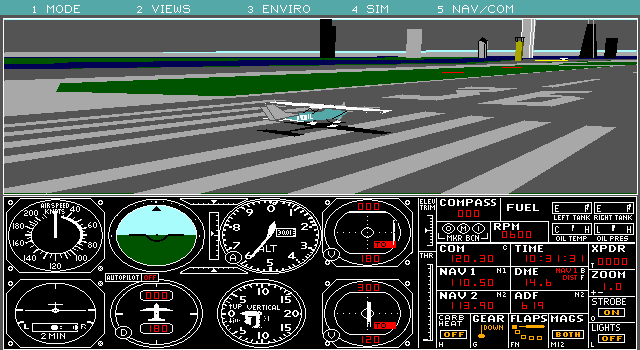
Microsoft Flight Simulator 5.0 (1993)
The fifth version of the flight simulator had a real coordinate system, which made the landscapes of the fourth version incompatible with FS 5.0. For the first time, textures were used, which made it possible to achieve a much higher level of realism than in previous simulators with flat shadows. Now each plane had its own instrument panel, and not one, only slightly modified for each car.
In 1995, MS FS 5.1 was first released on CD. He had truly three-dimensional weather effects, and the landscape was built using libraries of satellite imagery of the Earth. The combination of the lack of facilities in MS FS 5.1 (for example, only 250 airports around the world) and the release in 1995 of the Flightshop program by BAO Ltd. gave impetus to the wave of free custom add-ons.

Microsoft Flight Simulator 6.0 (1996)
The latest version of MS FS, which Bruce Artvik put his hands on, was sold under the name Flight Simulator for Windows 95 to support the corresponding operating system. Shortly before the release of the simulator BAO Ltd. Microsoft was sold, and now Bruce Artvik now had only consultant status. At about the same time, subLOGIC was taken over by Sierra to develop another flight simulator, the Pro Pilot.
The main differences between FS 6.0 were improved models, instrument panel textures, a greater number of landscape textures, and several new aircraft. Curiously, despite all the complaints of opponents of the new Windows, the frame rate of the new simulator has increased by one and a half times compared to the versions under Windows 3.11, although the resolution has also been increased.
MS FS 6.1 was named Flight Simulator 98 and was released in 1998. With the exception of the start of using DirectX, the appearance of the Bell 206BIII JetRanger helicopter, updated Cessna 182, 3000 airports and 45 developed cities, there were only minor improvements. Worldwide, more than 10 million copies of FS98 have been sold.
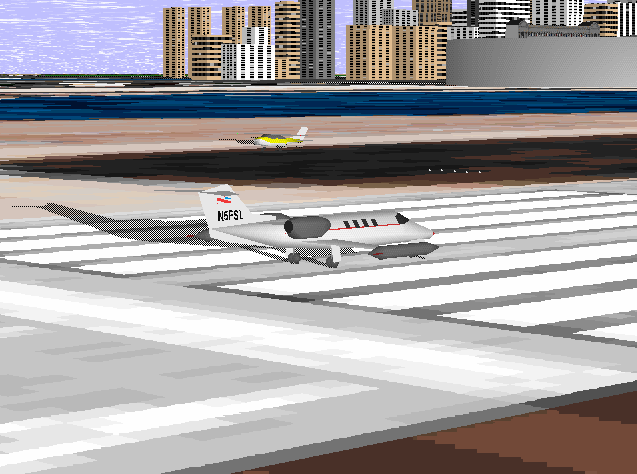
Microsoft Flight Simulator 7.0 (1999)
The version called Flight Simulator 2000 had large system requirements at that time - at least a Pentium 166 MHz, but a processor with a clock frequency of 400-500 MHz was really required. Artvik was right in speaking of the sale of BAO Ltd. as a necessity: 130 people participated in the development of the new version. GPS appeared in FS 7.0, support for downloading real-world weather from the Internet, 17,000 new airports (now there are 20,000 of them). In fact, it was possible to talk about the presence of almost all major airports in the world. MS FS 2000 is the latest simulator that supports Windows 95 and Windows NT 4.0.

Microsoft Flight Simulator 8.0 (2001)
Flight Simulator 2002 received improved control of air traffic, artificial intelligence from other aircraft, the effects of inertia when viewing a virtual cockpit and improved performance compared with the previous version. The release was slightly delayed until October 19 to remove the twin towers after the events of September 11, 2001.

Microsoft Flight Simulator 9.0 (2003)
A simulator called Flight Simulator 2004: A Century of Flight was released in the year of the centenary flight of the Wright brothers. The new version included several historical aircraft, interactivity in the virtual cockpit, a greater variety of landscape objects: lanterns, barns, silos, etc. An update to version 9.1 was released on June 10, 2004, adding forgotten bridges and several other objects.
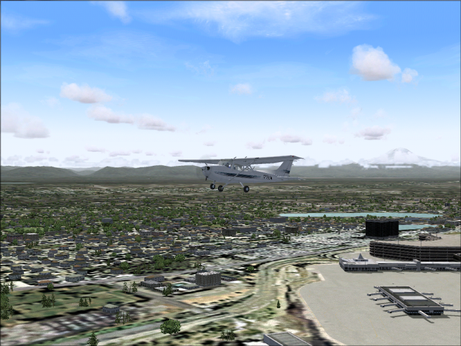
Microsoft Flight Simulator 10.0 (2006)
Flight Simulator X is the tenth and last version of Flight Simulator ever released. Meigs Airport, the default airport in previous simulators, was closed in March 2003, and only in this version it was completely cut out. In the tenth version, support for multiplayer games has been improved, including new management capabilities of one aircraft together or work in the control tower. The Deluxe version of the simulator contains an SDK that allows you to change the auto-generated landscape. The system requirements have increased significantly, the need for a powerful processor is especially noticeable, for the first time the simulator was delivered on DVD.
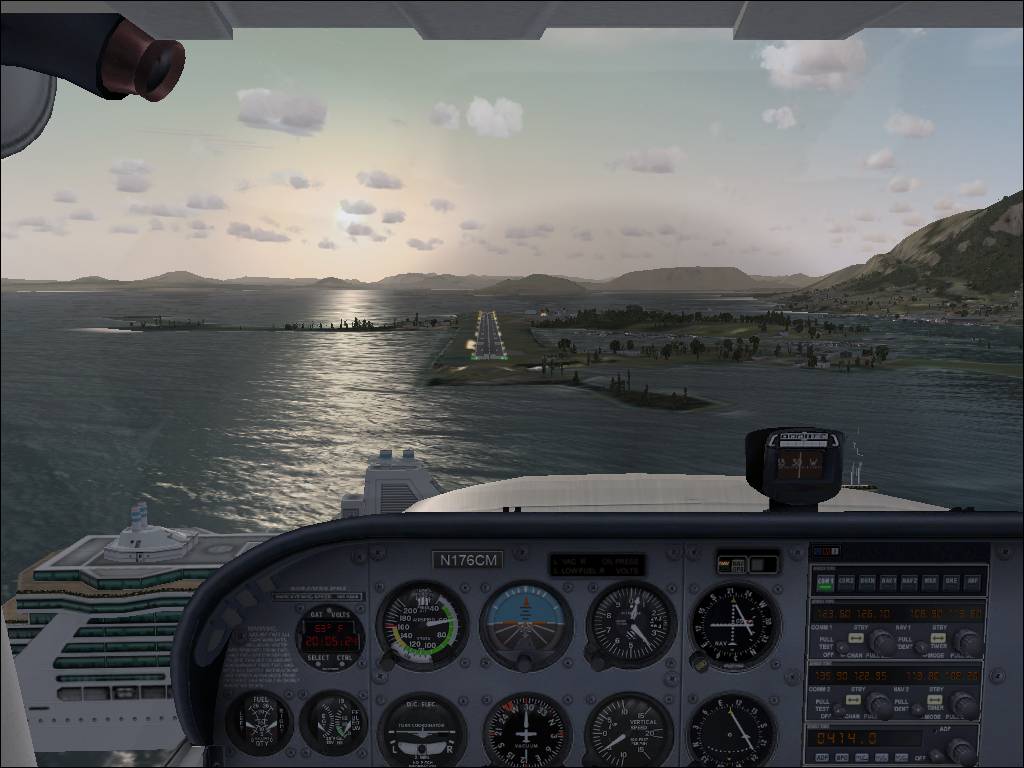
Microsoft Flight
For a while, Microsoft’s program development unit in this series was closed as a measure to tackle a company against financial problems. However, in August 2010 there was information about the new version. Unfortunately, Microsoft Flight, as the name implies, is just a free (F2P) game, with good graphics and a very arcade gameplay, so it’s impossible to consider it a successor and, even more, a revival of the series, despite all the marketing . No previous additions are incompatible with it, since this game is monetized by selling additional content (DLC).
Based on The Story of Flight Simulator , an article on Wikipedia and a biography of Bruce Artvik .
Source: https://habr.com/ru/post/147354/
All Articles